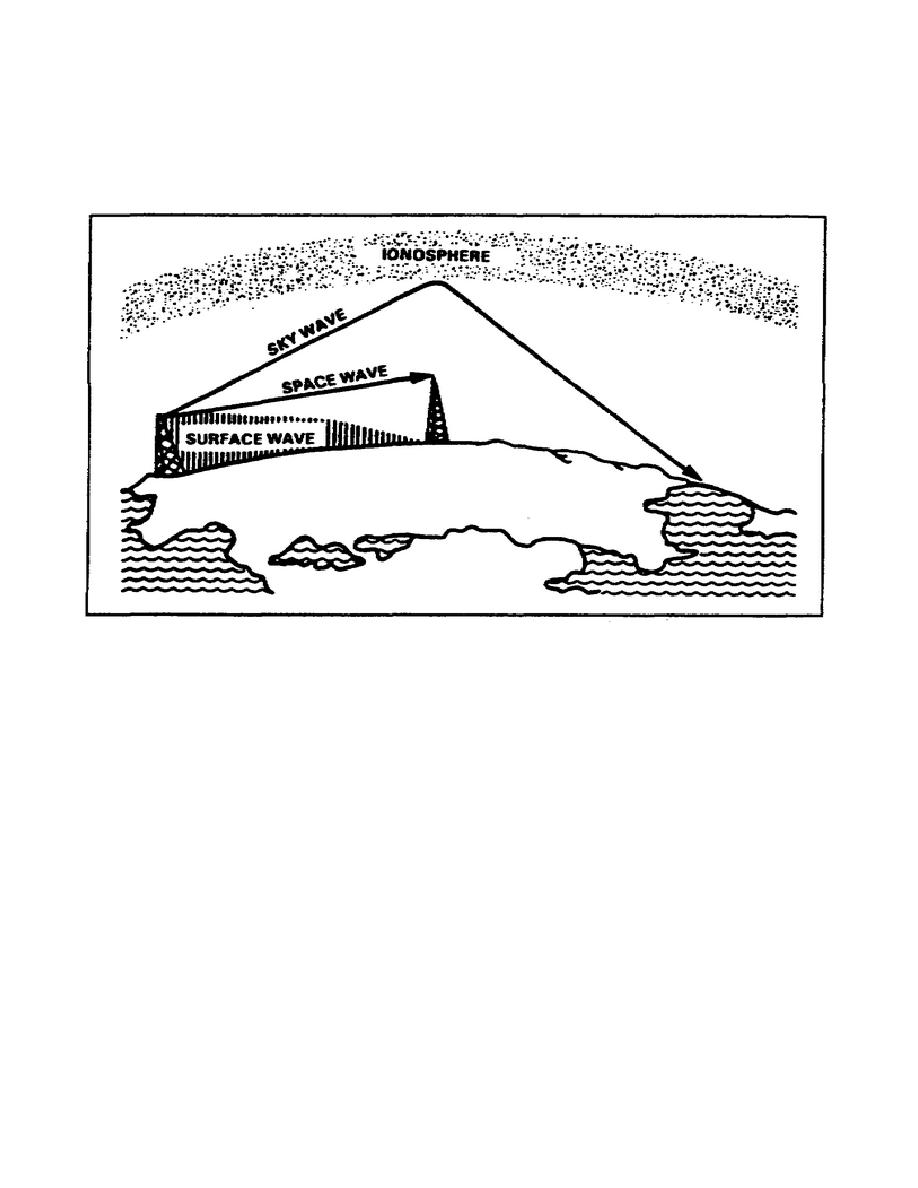
1. General. Ground waves travel near the surface of the Earth. Most Army tactical communications
systems use ground wave propagation (single-channel voice, multichannel, and mobile subscriber
equipment(MSE)). Sky waves are reflected back to Earth from the ionosphere. Other signal systems
use sky wave propagation (tropospheric scatter radio, high frequency (HF) AM voice, and AM radio
teletypewriter (RATT). Figure 2-1 depicts ground wave and sky wave propagation.
Figure 2-1. Ground waves and sky waves.
2. The Earth's atmosphere. Since the Earth's atmosphere is the medium through which radio signals are
transmitted, it follows that these signals are affected by varying conditions (weather, electrical activity in
the upper regions, and solar eruptions). The atmospheric conditions vary with changes in altitude,
geographical location, and changes in time (day, night, season, year). The three separate regions (layers)
of the Earth's atmosphere are the troposphere, the stratosphere, and the ionosphere. Figure 2-2
illustrates the layers of the atmosphere.
a. The troposphere extends from the face of the Earth to an altitude of about 7 miles at the north
or south poles and 11 miles at the equator. The Earth's weather activity occurs in this region. It is very
turbulent due to the temperature variations, density, and pressure, and these atmospheric conditions
greatly affect radio wave propagation.
b. The stratosphere is located above the troposphere. It extends from a height of 7 miles at the
poles (11 miles at the equator) to a height of about 31 miles. There is little water vapor present and the
temperature is almost constant; consequently, this region has relatively little affect on radio waves.
SS0130
2-2


 Previous Page
Previous Page
